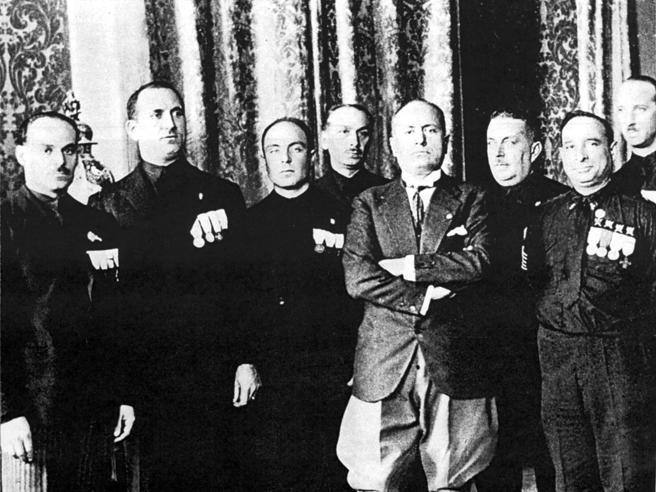Giovanni Gentile argues that fascism is not just a political movement that seeks to restore order, nor is it merely the most genuine and courageous expression of true Italy (the one that emerged from the trenches and Vittorio Veneto). Fascism is also a religion, uncompromising like any cult, especially one that calls for sacrifice – a sacrifice willingly embraced by its young followers to rebuild the nation because that is their mission.
The 1925 duel between Croce and Gentile
The contrasting Manifestos of the two great philosophers, reproduced by the Fuoriscena brand, depicted their judgment on liberal Italy and the emerging Fascist regime. “The claims of fascism, the enemy of freedom.”
This is probably the most underestimated text in the history of Fascist Italy. It is a good summary of the aspirations of the new regime, starting with the claim of being the purest heir “of the Italian spirit,” and at the same time, it is the closest thing to a doctrinal basis for the dictatorship, which had been in place since the autumn of 1922 and was now formally completed.
In a few words, Gentile legitimizes ex post the squadrist violence during the years of the civil war (“resolute young people, armed, wearing the black shirt, organized militarily, went against the law to establish a new law, against the State to found the new State”), claims the historical necessity of undermining individual freedoms, proudly welcomes the annihilation of opposition, and celebrates the foundation of a rejuvenated homeland capable of recovering the ideal momentum of the Great War, all discipline and obedience. Decidedly, as Alessandra Tarquini writes in the introduction to Gentile’s text in the edition of the two Manifestos of Gentile and Croce proposed by Fuoriscena (Giovanni Gentile, Manifesto of Fascist Intellectuals, introduced by Tarquini – Benedetto Croce, Manifesto of Antifascist Intellectuals, introduced by Giovanni Scirocco), reading that document is a good way to come to terms with Italy in the twenty years of Fascism.
One confronts, to say the least, the massive mobilization of intellectuals in support of the regime: not only the enthusiasts of the party and the extremists of our nationalism signed that manifesto, but also Pirandello, Ungaretti, Ojetti, and Lionello Venturi. A discomforting page for some holy monsters of future republican school anthologies: after 1945, many pious veils would be drawn, invoking the absence of a fascist culture (or consensually fascistized).
Yet, it is precisely the enthusiastic adhesion of the learned, convinced that they were participating in a historical project of radical reconstruction of the Italians, that above all restores the totalitarian soul of fascism. Against this drift, stood Benedetto Croce and those who, as Giovanni Amendola would have written, thought that one could not just remain silent, that at least the weapons of words should be used for “the moral salvation of our country,” even if it meant definitively breaking long-standing alliances, as happened to the two former friends, Croce and Gentile.
Certainly, as Giovanni Scirocco reminds us, among the signatories of the Manifesto of the Antifascist Intellectuals, published on May 1 of the same year, there were also many who had initially supported fascism (like Luigi Albertini) or tolerated it as a histrionic phenomenon (like Croce himself). But, at least in the end, it was they who testified that, among the wise and cultured of the peninsula, some had remained courageous enough to proclaim that it was the trust in liberalism that laid the foundations for a modern Italy.
And that the love for freedom, to say it with Croce, promised much more to the Italians than the grotesque belief in the Great Fascist Italy that had seduced the signatories of the black shirt manifesto. January 29, 2024 (modified on February 2, 2024 | 17:13) © ALL RIGHTS RESERVED
